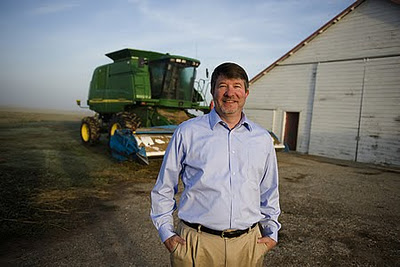Reposted from the California Rice Commission blog. Please check out calrice.org for more posts and beautiful images of the Sacramento Valley.
The full extent of the drought’s impact on the number of acres of rice planted this year is unknowable at this time. There are simply too many factors left to play out before our last fields are planted for anyone to know the final outcome.
The things that rice farmers are looking at include: how much surface water is available; can I pump groundwater; are prices going to be enough to offset increased pumping costs? Finally, will it rain more between now and the middle of May? (We certainly hope so!)
By early June, the crop will be planted and we will know the answer to the rice supply question. Until then each day will bring new information – both good and not as good, that will help California rice farmers and the communities they live in absorb the realities that the Sacramento Valley will be facing.
There are, however, some key impacts that go beyond rice farms that will unfold this year.
First is the impact on our rural communities. Often lost from our view from downtown Sacramento is the reality that the small towns in the Sacramento Valley like Grimes, Colusa and Richvale are dependent on agriculture and especially rice production for much of their economic activity.
Second is the impact on the hundreds of species of wildlife that use California ricelands every day. Less rice means less habitat. This is especially important when we remember that 95 percent of the state’s wetlands are now gone. Rice is the only crop that provides similar benefits.
Third will be the question, and even accusation, that rice uses a lot of water. When seen from a plane landing at the airport or from the car window speeding along Highway 99, the five inches of water in a rice field look much deeper. Its impossible to know that rice uses that about the same water per serving as oranges or broccoli – it just sits on top on the heavy clay soils of our rice fields.
Finally we will all be looking for solutions including short–term fixes like using less water. We will all be looking for longer–term solutions that include additional water like Sites Reservoir in the western foothills of the Sacramento Valley.
As the reality of the drought unfolds for each of us this year – ag and urban alike, we will keep you updated on what is going on in our towns, with our families and businesses. In these blogs, we will talk about what the drought looks like from where we live and the wildlife that live in our fields.




